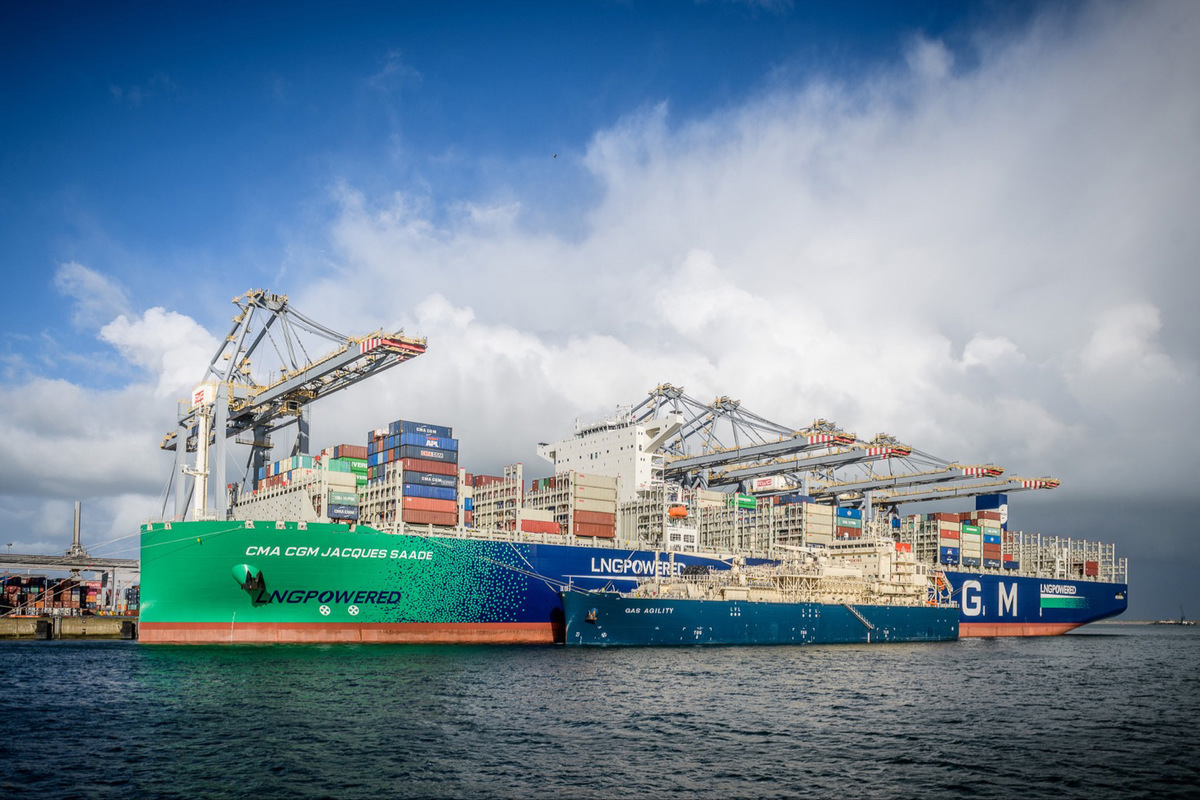LNG Bunker Snapshot: Prices in Rotterdam declined amid steady supply
Rotterdam's price declined amid stable European gas supplies and storage levels, while Singapore's price increased because of heightened demand in Asia and outrage at the Wheatstone LNG plant in Australia.
 PHOTO: Bunkering of CMA CGM's LNG-powered vessel in the Port of Rotterdam. CMA CGM
PHOTO: Bunkering of CMA CGM's LNG-powered vessel in the Port of Rotterdam. CMA CGM
Changes in weekly LNG bunker prices:
- Rotterdam down by $7/mt to $681/mt
- Singapore up by $17/mt to $778/mt
Rotterdam
Rotterdam’s LNG bunker price has declined by $7/mt to $681/mt in the past week. This decline mirrors the drops in the front-month NYMEX Dutch TTF Natural Gas benchmark and aligns with abundant gas storage levels in European countries.
“The gas market is getting increasingly confident that gas flows from Russia to Central Europe will continue after all, at least until the New Year," according to a report from Energi Danmark.
More than 40 million cubic meters of gas were booked to transit through Ukraine on Friday, indicating that Gazprom, Russia’s state-owned gas company, received timely payments. There have been concerns that the European court rulings might block payments to Gazprom, redirecting funds to compensate companies like Uniper for undelivered gas. However, these payments went through, ensuring steady gas flows, ING’s Warren Patterson said.
With gas storage in the European Union now at 75% capacity, well above the five-year average of 65%, the market is becoming even more stable.
Singapore
Singapore’s LNG bunker price rose by $17/mt, reaching $778/mt. This increase is influenced by higher prices in the Asian LNG market and the Japan/Korea Marker (JKM) price.
Some Asian buyers have become more cautious about purchasing spot LNG due to recent increases in the JKM price. The spot LNG price in East Asia has climbed to $12.60 per million British thermal units (MMBtu), which many market players find too high, Rystad Energy stated.
An extended outage at Wheatstone LNG, which is anticipated to resume operations on 27 June, is another factor contributing to the price increase.
Weather forecasts are also affecting gas demand in East Asia. The Japan Meteorological Agency predicts a 70% chance of warmer-than-normal temperatures across most of Japan. Similarly, the Korean Meteorological Administration forecasts warmer-than-normal temperatures throughout South Korea until mid-July.
Despite less spot market activity among East Asian buyers, strong demand from the power sector continues to support rising LNG prices. Warmer temperatures usually lead to higher power demand, forcing power plants to purchase more gas volumes.
By Debarati Bhattacharjee
Please get in touch with comments or additional info to news@engine.online





